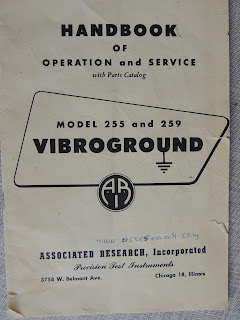Fluke 6160B
Frequency Synthesizer
The 6160B Frequency Synthesizer is the industry's most popular VHF synthesizer because of its high spectral purity. It produces frequencies from 1 MHz to 160 MHz in two ranges: 1 MHz to 12 MHz and 10 MHz to 160 MHz.Frequency resolution is 0.1 Hz on the 12 MHz range and 1.0 Hz on the 160 MHz range. A unique feature of the 6160B is that the highest internally-generated frequency is that of the output VCO. This makes servicing easier, and eliminates UHF EMC problems. SInce the output VCO operates from 80 to 160 MHz, frequency division is employed for coverage of lower frequencies. This results in improved spurious specifications for frequencies lower than 80 MHz. Phase noise is similiarly reduced for lower bands. Adjustable output up to +13 dBm into 50-ohms. Local or remote control. Level maintained, absolute phase noise <-62 dBc.
Fluke 6039A
(one of the above is that model)
Frequency Synthesizer Low Frequency Range: 1-4 MHz with 0.1 Hz Resolution
High Frequency Range: 4-40 MHz with 1.0 Hz Resolution.
Main RF Output (rear): Fixed Level _21 dBm into 50 ohms.
Auxillary Output: 1 MHz and 100 kHz.
lower is modified to give rf output in front
FLUKE 1120A TRANSLATOR IEEE-488 to remoting FLUKE's instruments

The Very Large Array, one of the world's premier astronomical radio observatories, consists of 27 radio antennas in a Y-shaped configuration on the Plains of San Agustin fifty miles west of Socorro, New Mexico. Each antenna is 25 meters (82 feet) in diameter. The data from the antennas is combined electronically to give the resolution of an antenna 36km (22 miles) across, with the sensitivity of a dish 130 meters (422 feet) in diameter
The Master Local Oscillator (MLO) Racks
The Master Local Oscillators
were the reference oscillators for all VLA electronics
and common to all VLA antennas. A precision hydrogen maser was used as
the primary reference source. The Serial Line Controller
(SLC) was the digital interface between the ModComp computers and the
antennas via the Antenna/Local Buffers and the Data Sets.
The MLO racks, hydrogen maser on the right and tuning/switching racks in the middle.
Digital, reference and timing signals from the MLO racks went to each antenna, making a real rats nest behind the racks.
The MLO racks during the EVLA transition. The racks in the far rear are the master racks for the EVLA. You can see the FLUKE's 6160B Oscillators .
Στα μεγάλα Ραδιοτηλεσκόπια στις Η.Π.Α. υπάρχει ο θάλαμος βασικών Συχνοτήτων . Είναι τα FLUKE 6160B που διδουν σταθερές αρχικές συχνότητες.



























